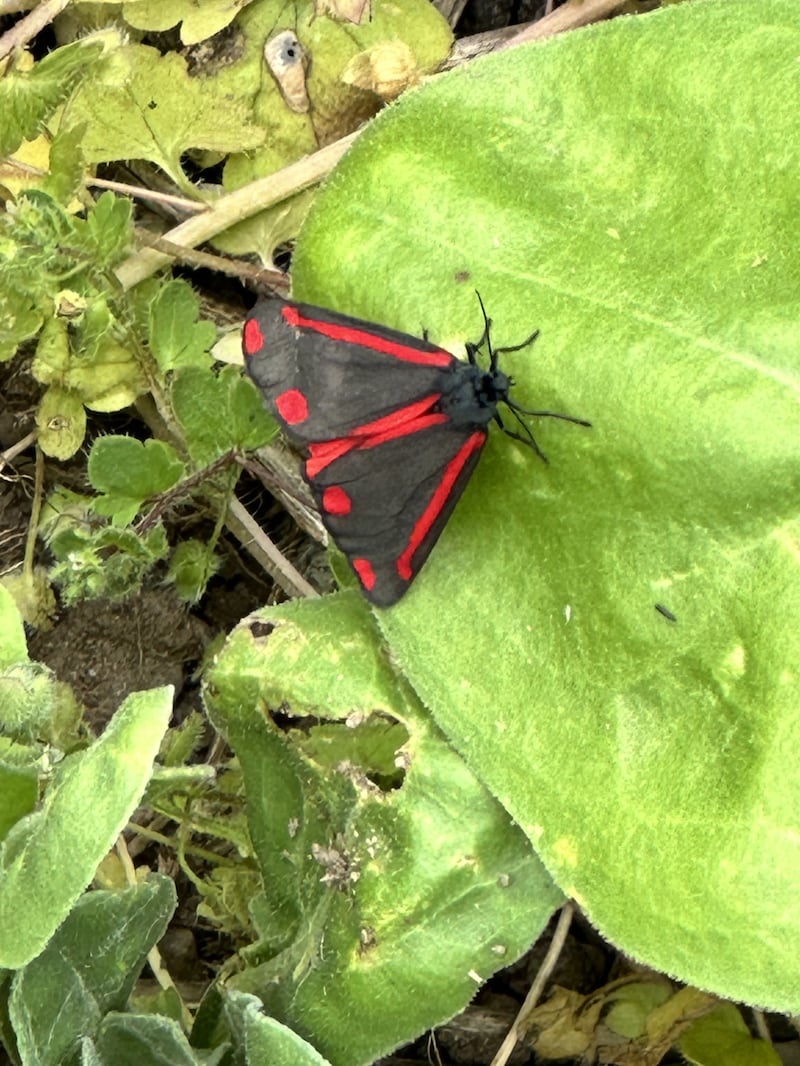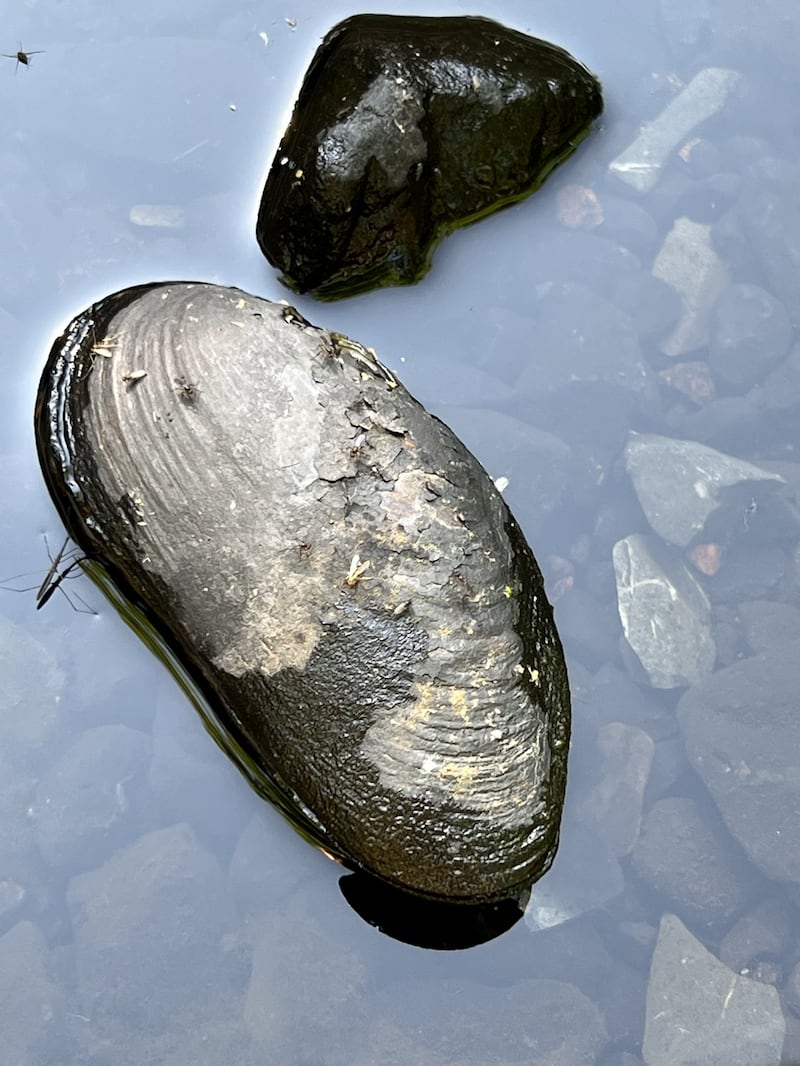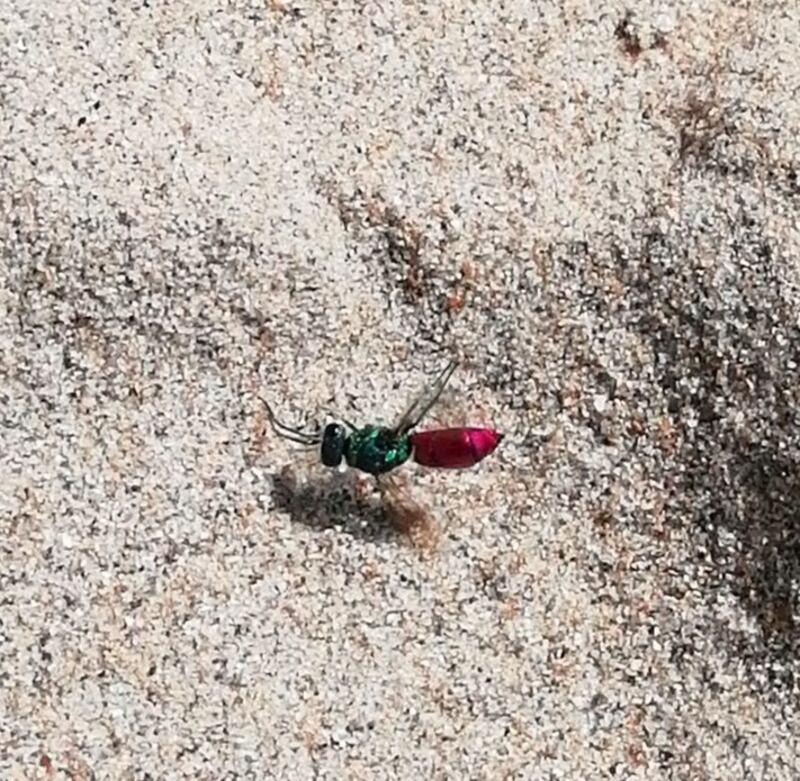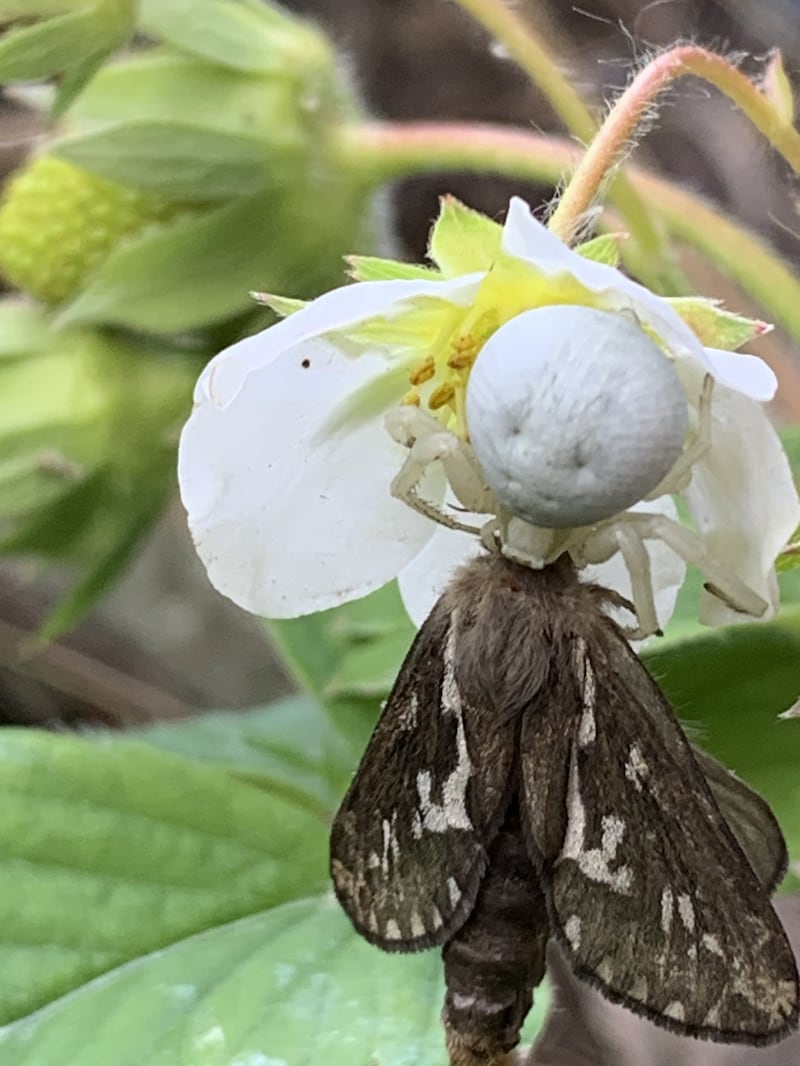This damselfly flew from the pond in my back garden on to a flower nearby. I can’t find out what type it is, can you please help? Brendan O’Donoghue, Co Kildare
It is a beautiful jewelwing – one of our biggest damselflies. A species, which is absent from the northern half of Ireland, is most abundant from early June till mid-August. Seeing it in your garden just goes to show how having a garden pond can spectacularly increase the biodiversity in your area.

This photo was taken in the vegetable patch in my garden. What is it? Paul Haslam, Co Wexford
It is more evidence of how biodiversity will thrive if given half a chance. Presumably as you are growing vegetables to eat yourself, you use little or no sprays and poisons. So, this moth – the day-flying cinnabar moth – is happy to patrol your garden, no doubt looking for yellow ragwort plants on which to lay its eggs. These hatch into yellow and black stripy caterpillars which feed gregariously on the leaves. Both the caterpillars and the adults are unpleasant to taste and the warning colours of both advertise this to would-be predators such as birds.

Walking along the bank of the Owenriff river in Oughterard, Co Galway, I spotted what I thought was a rock until it squirted a jet of water out. Looking closer there were lots of these creatures in shells, which locals told me were pearl mussels. Eleanor Cunney, Co Kildare
The freshwater pearl mussel (Margaritifera margaritifera) is a mussel species of clean rivers that is on the verge of extinction in Ireland and western Europe due to intensification of land use. It is very long-lived, surviving for 100 years, on average, in Ireland. As the juvenile mussels remain buried in the river substratum for a period of five or more years, the habitat must be constantly maintained in good condition over the long-term. Even temporary declines in condition caused by sediment settling or organic pollution, can lead to the loss of all juveniles produced in the previous five years. They are filter feeders, and in turn the juveniles can form part of the diet of river fish.

My sister noticed this insect on Barrow Beach because of its bright colours. It didn’t seem familiar with sand and kept falling over, exposing its bright red belly and green upper body. Marie Townsend, Co Kerry.
It certainly isn’t familiar with beach sand. This is a ruby-tailed wasp, which is a parasite of mason wasps. Adult ruby-tails run over walls and tree trunks looking for the mason wasps’ nests, in which they lay their eggs. The larvae hatch out and feed on the mason grubs. This one was on a hiding to nothing on Barrow Beach.

I showed this photo to my father, who is a big nature fan, and he said you would be the person to ask. What is going on here? Heather Burnett -Niland
This is a common swift moth, which is meeting its final end at the hands – or indeed the fangs – of a crab spider. Crab spiders lurk inside flowers waiting for a nectar-seeking insect to stick its head in for a quick drink. Your strawberry flower was home to one such opportunist, although crab spiders can live in a wide variety of flowers.

This mandarin duck has been hanging around with local mallards at Maynooth canal harbour. Is it lost? Patrick Timmins
The mandarin duck came originally from China. It escaped here from domestic collections and is now established in the wild. This glamorous mandarin drake cannot breed successfully with our native mallard, but that doesn’t stop it trying.
Please submit your nature query, observation, or photo with a location, via irishtimes.com/eyeonnature




















